蘋果復興
Last Fall, I began the
去年秋天,我開始
在舊金山的Type West program at the Letterform檔案庫中Letterform Archive in San Francisco. For those of you who don’t know, the Letterform Archive is creative heaven — a type nerd’s letter art collection turned graphic design museum.鍵入West程序。 對于不認識的人來說,Letterform檔案館是充滿創造力的天堂-一個書呆子的字母藝術收藏轉變為平面設計博物館。I had been considering applying to this type design program for a while. Despite having practiced design and lettering for several years, I still felt like my work was missing a level of finesse, specifically in the realm of typography. I wanted to command type beyond placing them in layout, in ways that were unique, exciting, experimental.
我已經考慮申請這種類型的設計程序一段時間了。 盡管已經從事設計和刻字多年,但我仍然覺得自己的工作缺乏技巧,尤其是在版式領域。 我想以獨特,激動人心,實驗性的方式命令類型,而不是將它們放置在布局中。
I don’t see myself making fonts for a living, but Type West seemed like a program that would uplevel my graphic design skills. Every time I visit the Archive, I leave completely over-inspired from seeing art history classics like illuminated manuscripts and psychedelic posters, to new discoveries (for me) like Letraset and Mid-Century brand manuals. Finally, I decided to bite the bullet and applied. Shortly after getting admitted into the program, I was given the first major assignment: revive a typeface.
我看不到自己以謀生為生,但是Type West似乎像一個程序,可以提高我的圖形設計技能。 每次訪問檔案館時,我都會完全被啟發過,從看到藝術史經典作品(例如帶燈的手稿和迷幻的海報)到新發現(對我而言),例如利特雷瑟(Letraset)和中世紀品牌手冊。 最后,我決定硬著頭皮申請。 進入程序后不久,我得到了第一個主要任務:改寫字體。
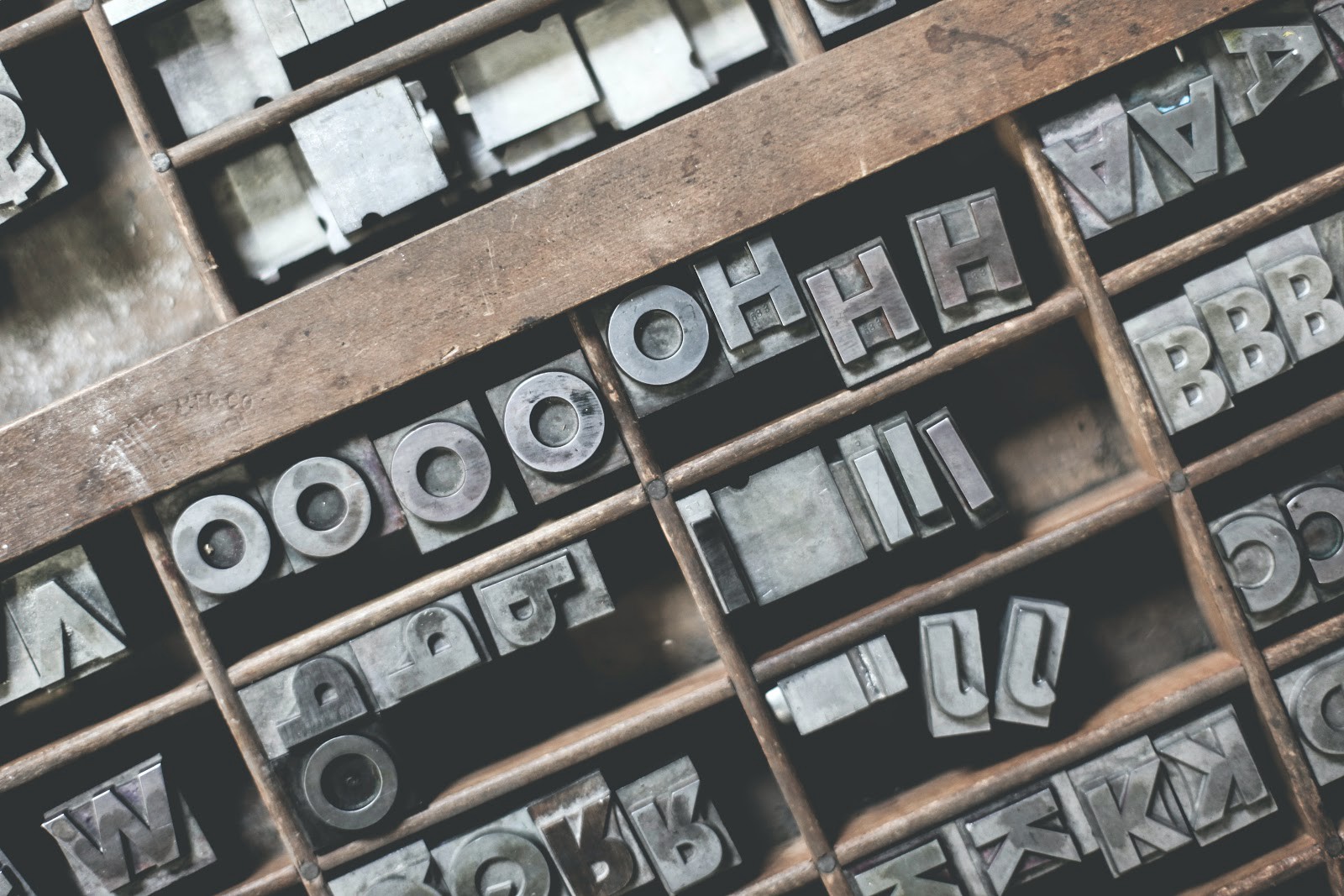
A very brief history of type design. Digital type, or “fonts” as most of us know it, has only been around for the past four decades or so. Up until the 1960s, all letterforms were handcrafted by casting metal or carving wood. So to start the project, we had to find a pre-1950 book and create a digital version of its body copy.
字體設計的簡短歷史。 我們大多數人都知道的數字字體,也就是“字體”,僅在過去的四十年左右才出現。 直到1960年代,所有的字母都通過鑄造金屬或雕刻木材手工制作而成。 因此,要開始該項目,我們必須找到一本1950年前的書,并創建其正文的數字版本。
尋找來源 (Finding the Source)
On a single shelf of old books at my local used book store, there were a plethora of incredible covers with gorgeous Victorian lettering. But when I opened them up, the interior was filled with what seemed to be the same damn Times New Roman-looking type! I was fooled! After 40 or so books, one stood out from the rest. It had a Didot-like typeface with exaggerated contrast and elongated letters. It was Rococo yet Vogue. Cardi B meets Kate Middleton. Sassy, but classy. I did not understand a single word in this little French book, titled Le Mont Saint-Michel, but I instantly knew this was the one.
在我當地的二手書店的一堆舊書上,堆滿了許多令人難以置信的封面,上面有華麗的維多利亞時代字母。 但是當我打開它們時,內部充滿了看起來像該死的時代新羅馬風格的東西! 我上當了! 讀了40本書之后,其余的書脫穎而出。 它有一個類似Didot的字體,帶有夸張的對比度和細長的字母。 那是洛可可式的但時尚。 Cardi B與Kate Middleton相遇。 時髦,但優雅。 在這本名為《圣米歇爾山》的法語小書中,我聽不懂一個字,但我立即知道這是一個。
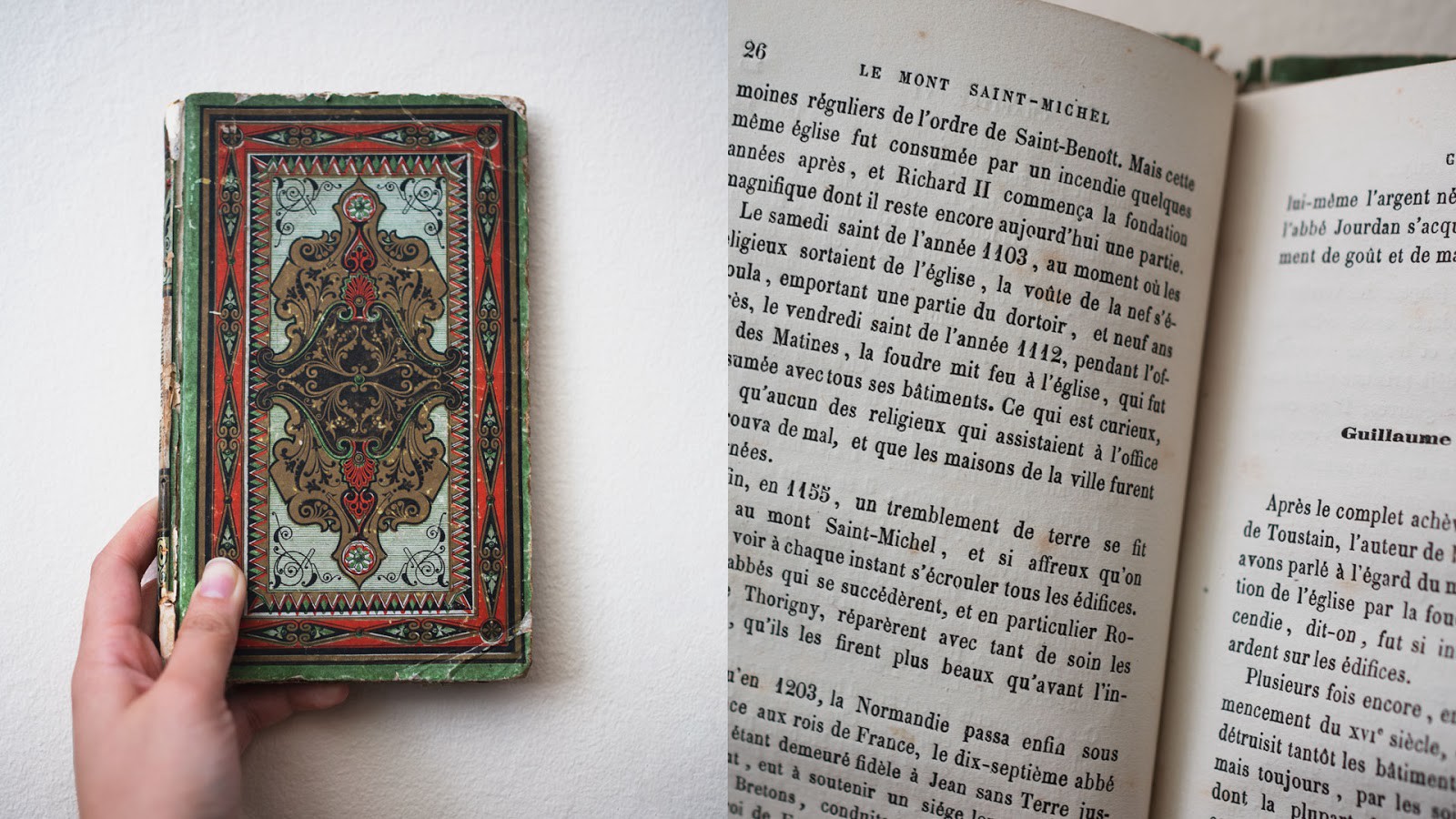
The following week, we gathered high-resolution digital scans to collect characters: A–Z, lowercase, uppercase, numbers, and punctuation. I scanned way too many spreads, not realizing you can find a solid amount of characters after a few pages. Though, it did help me notice that letters deviated throughout the book. Some pages were light with faded ink, while others were so heavily printed that you could see the leftover imprints of the metal letters on the flip side of the page. The inconsistencies were so charmingly human.
接下來的一周,我們收集了高分辨率的數字掃描以收集字符:AZ,小寫字母,大寫字母,數字和標點符號。 我掃描了太多的點差,但沒有意識到您可以在幾頁之后找到大量的字符。 但是,這確實幫助我注意到了整本書中字母的偏離。 有些頁面的油墨淺淡,褪色,而另一些頁面的印刷量太大,以至于您可以在頁面的背面看到金屬字母的剩余印記。 不一致之處是如此迷人。
先后先后 (First after First after First)
The initial set of letters that we designed were “OHno”, then “pavgDVER”. We began with these letters because they form the foundation for the rest of the character set. The H and n for their angularity. The O for its roundness. For this class, we used RoboFont. Since I’d gotten comfortable with the pen tool in Adobe Illustrator, it wasn’t too hard to pick up this new software.
我們設計的最初字母是“ OHno”,然后是“ pavgDVER”。 我們從這些字母開始,因為它們構成了其余字符集的基礎。 H和n表示角度。 O為圓度。 對于此類,我們使用了RoboFont。 由于我對Adobe Illustrator中的鋼筆工具已經很滿意,因此選擇此新軟件并不難。
Tracing over the scans with the pen tool, I finished drawing these twelve letters in only a couple of hours. I stood back and thought to myself, “Well that was easy. If the rest of the class is like this, I’ll be making fonts in no time!” The first critique was a rude awakening.
使用鋼筆工具跟蹤掃描,我僅用幾個小時就完成了這十二個字母的繪制。 我退后一步,心想:“那很容易。 如果班上的其他同學都是這樣,我將立即制作字體!” 第一個批評是粗魯的覺醒。
My instructors, James Edmondson, Graham Bradley, and Tommi Sharp went to town. Immediately, they pointed out that the stroke weights were inconsistent. Spacing sucked. Some letters didn’t make sense. Also instantly, I bombarded them with a ton of questions. What’s the “a” supposed to look like? Why do the serifs look so weird? What kind of terminals are these? My book’s inconsistent printing made it hard to tell if the blobs were the design or a result of the printing. I thanked my critics for their advice as I walked away with a paper filled with red marks and an itch to get back to drawing.
我的老師James Edmondson , Graham Bradley和Tommi Sharp到了鎮上。 他們立即指出,行程的權重不一致。 間隔很爛。 一些字母沒有意義。 瞬間,我用大量問題轟炸了他們。 什么是“A” 應該是什么樣子的? 為什么襯線看起來很奇怪 ? 這些是哪種終端? 我的書的印刷不一致,因此很難分辨出斑點是印刷的設計還是印刷的結果。 我感謝批評家們的建議,因為我走開了,上面寫滿了紅色標記的文件和一頭渴望回到圖紙上的癢癢。
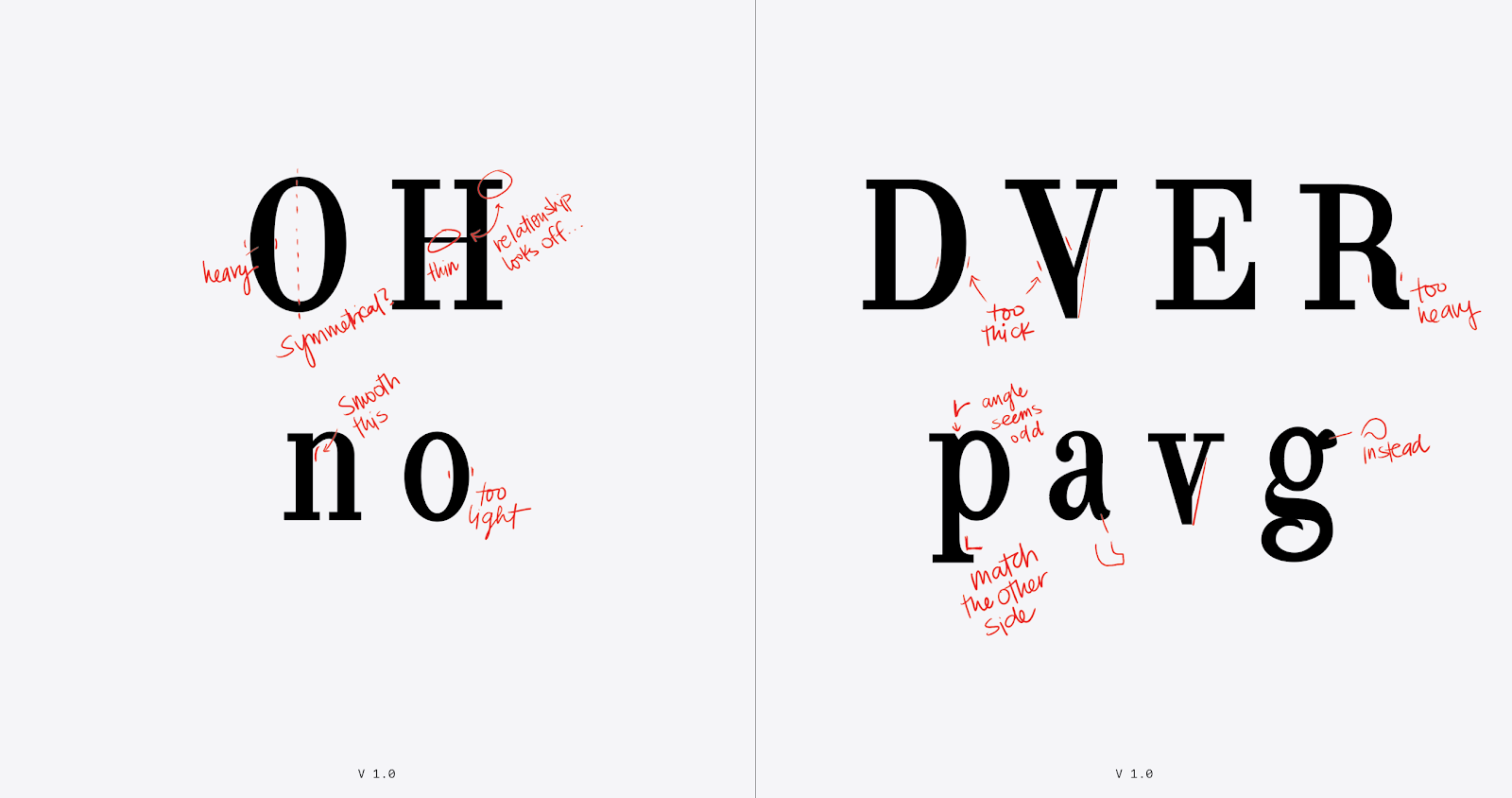
1.添加香料 (1. Add your spice)
I reworked my original set, then moved on to add more characters in the next several rounds. Next, “Hamburgefontsiv.” Then, A through Z, numbers, and finally punctuation. As I got deeper into the design process, more questions would arise. It felt like the more I think I’d grow, the less I seemed to know. I spent 4 weeks squinting my eyes at the book trying to dissect every single stroke.
我重新制作了原來的劇集,然后在接下來的幾輪中繼續添加更多角色。 接下來是“ Hamburgefontsiv”。 然后,從A到Z,數字,最后是標點符號。 隨著我深入設計過程,將會出現更多問題。 我覺得自己成長的越多,似乎所知道的就越少。 我花了4周的時間著眼睛看這本書,試圖剖析每一個筆畫。
Finally, my instructors urged me and the rest of my classmates to “STOP LOOKING AT THE SOURCE MATERIAL.” They reassured us that we’ve gotten familiar enough with our typeface by now and encouraged us to make our own aesthetic judgments. Armed with that mindset, I looked away from Le Mont Saint-Michel and turned the teardrop terminals into ball terminals in version 5. Then on a last-ditch effort to make the serifs look less weird, I bracketed them in version 6. Everything suddenly looked right.
最后,我的老師敦促我和我的其他同學“不要再尋找源材料”。 他們向我們保證,到目前為止我們對字體已經足夠熟悉,并鼓勵我們做出自己的美學判斷。 懷著這種想法,我將視線從圣米歇爾山(Le Mont-Michel)移開,將淚珠末端變成了版本5中的球形末端。然后,為使襯線看起來不那么怪異,我竭盡全力,在版本6中將它們括起來。看起來不錯。

2.感官設計 (2. Design with your senses)
Throughout the entire process, I consistently had issues with inconsistent stroke weights. A classmate helped me discover the ruler tool and I began obsessively monitoring all the stroke measurements. Things still looked off. But the numbers matched up! What’s going on?!
在整個過程中,我始終遇到沖程重量不一致的問題。 一位同學幫助我發現了標尺工具,然后我開始沉迷于監視所有筆劃的測量。 事情依舊。 但是數字匹配! 這是怎么回事?!
One day during our study hours, I stumbled upon a book in our class library that taught me how to see. It was Type Tricks by Sofie Beier. You see, type design is pretty much optical sorcery. Numbers and logic will only get you so far, but to get through the final stretch, you must activate your senses.
在上課時間的一天,我偶然發現班級圖書館的一本書教我如何看書。 這是Sofie Beier的Type Tricks 。 您會看到,字體設計幾乎就是光學魔術。 數字和邏輯只會使您步入正軌,但要走到最后一步,您必須激活自己的感官。
For you designerds, here are three game-changing type tricks I found while conjuring this typeface.
對于您的設計人員來說,這是我在構想此字體時發現的三種改變游戲規則的技巧。
改變游戲規則的技巧 (Game-changing type tricks)
1 / Contrast your strokesHorizontal strokes appear heavier than vertical strokes. There needs to be a slight contrast for them to appear identical. For example, the horizontal stem of an H should be slightly less thick than the vertical stems.
1 /對比筆觸水平筆觸比垂直筆觸重。 為了使它們看起來相同,需要稍加對比。 例如,H的水平莖的厚度應略小于垂直莖的厚度。
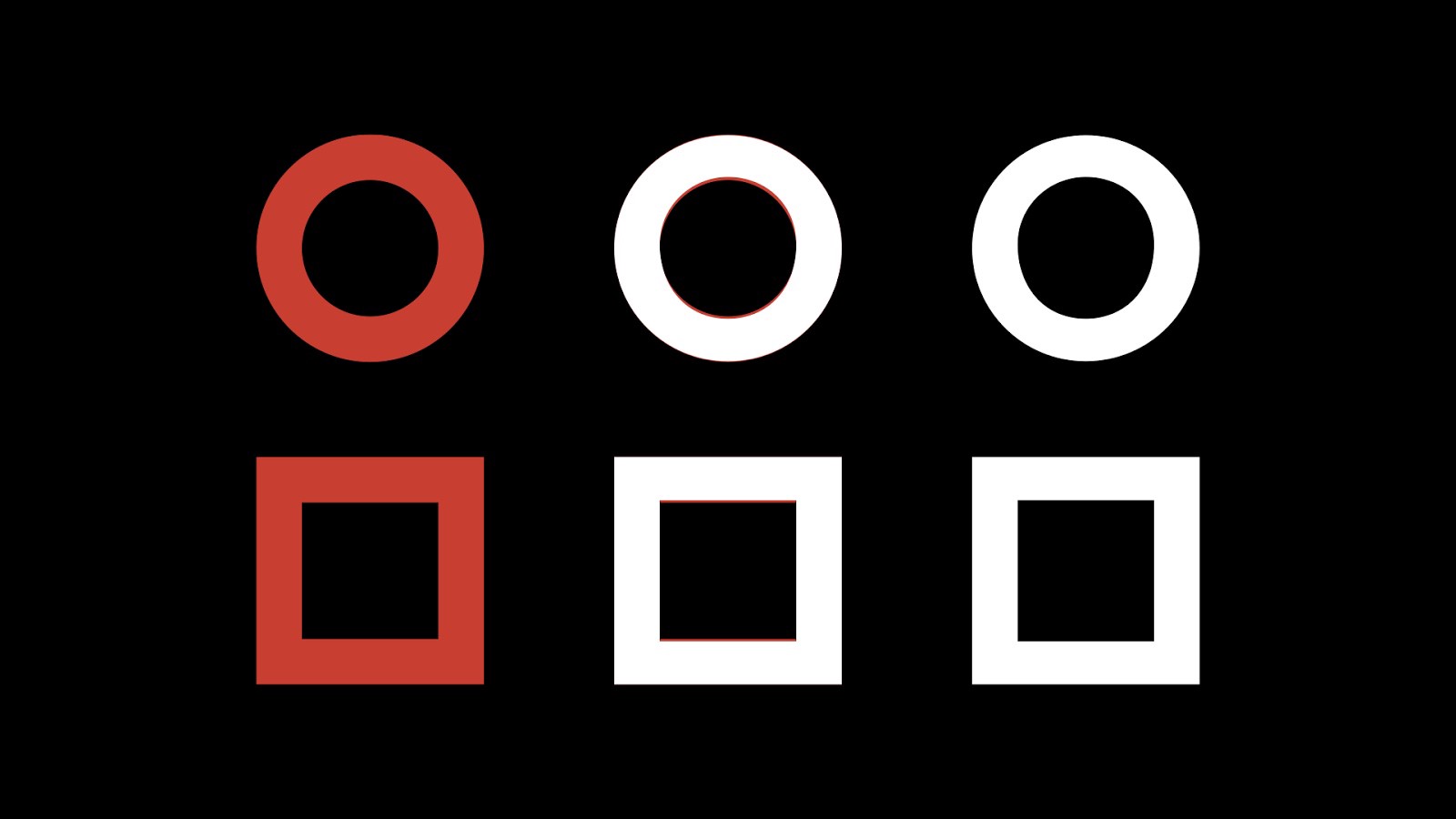
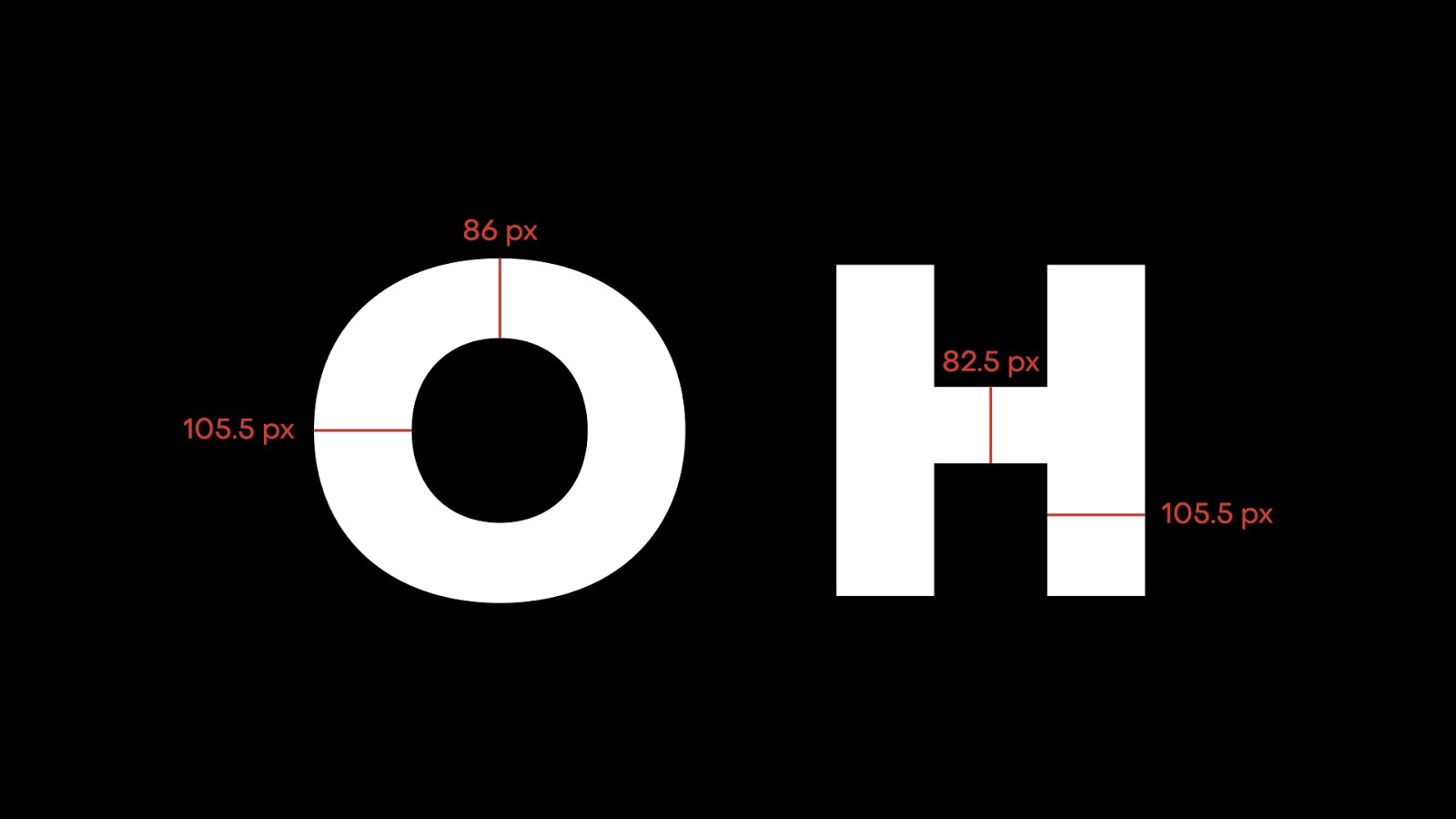
2 / Overshoot your pointsSay you have a square, circle, and triangle. For them to optically appear the same size, the circle curves must go beyond the height of the square, and the apex of the triangle even more so. It’s because at these points, they spend less time on the edge, so we perceive them as having less volume. This applies to letters O, A, V, and the joints of n and h for example.
2 /超調點假設您有一個正方形,一個圓形和一個三角形。 為了使它們視覺上顯示相同的大小,圓形曲線必須超過正方形的高度,而三角形的頂點則更大。 這是因為在這些時候,它們在邊緣上花費的時間更少,因此我們認為它們的體積較小。 例如,這適用于字母O,A,V以及n和h的關節。
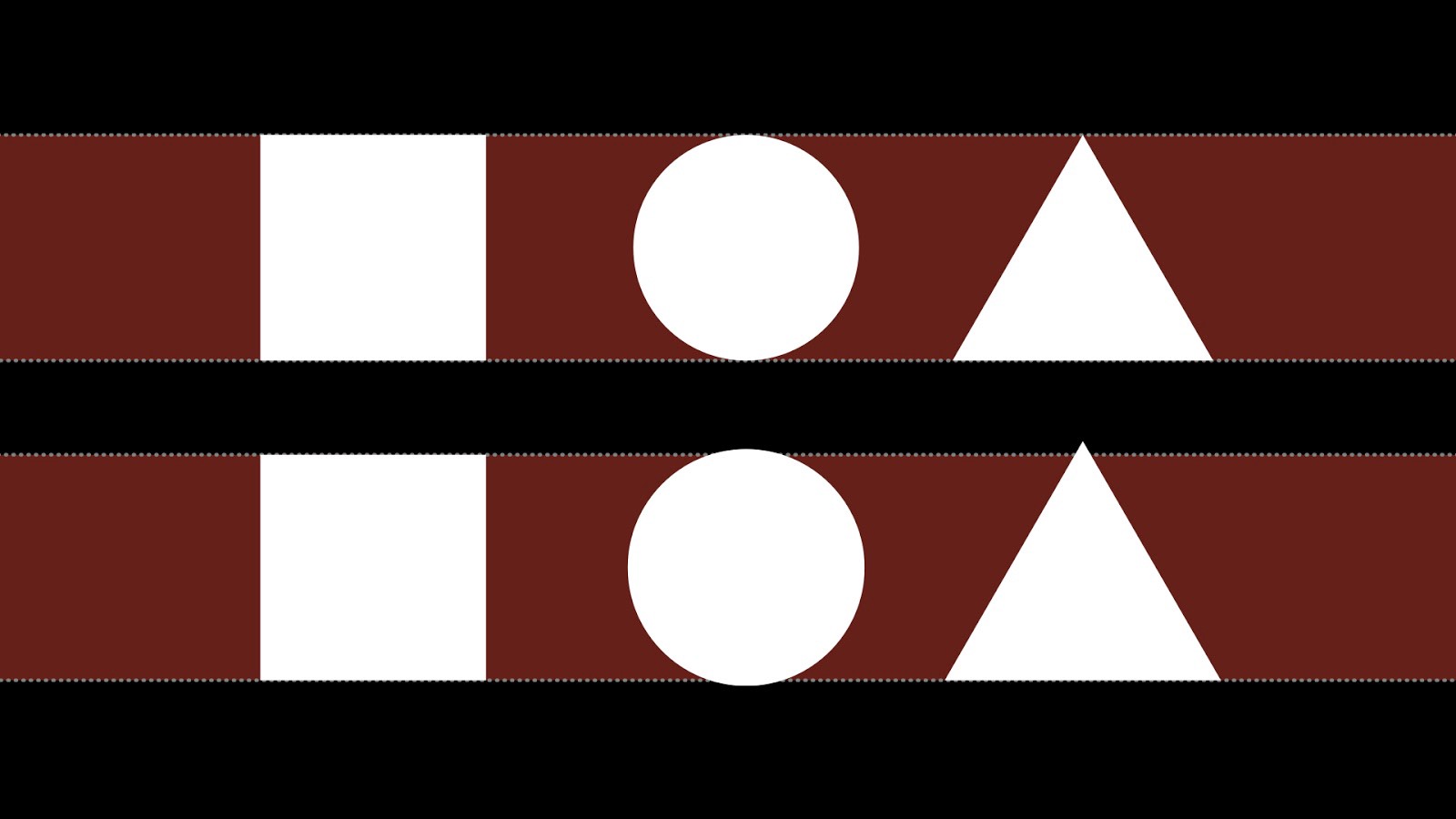
3 / Soften the anglesIf a point looks like it’ll hurt you, it’ll hurt your design. Pointy acute angles are visually unappealing and look digital. Instead, they should always be slightly cut off or rounded.
3 /柔化角度如果某個點看起來會傷害您,則會傷害您的設計。 尖銳的銳角在視覺上不吸引人,看起來很數字。 取而代之的是,應始終將它們略微切掉或弄圓。
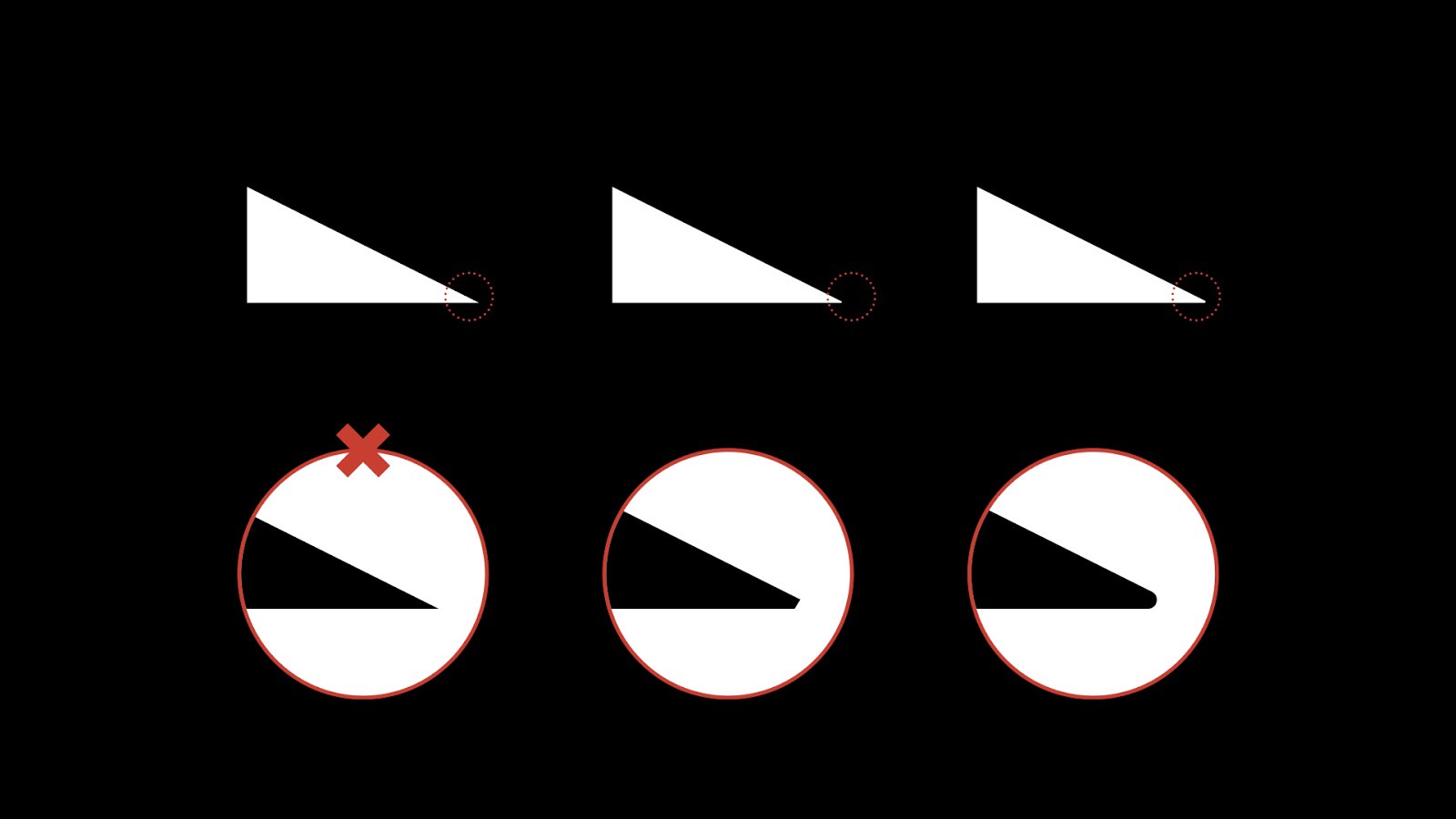
Bonus! Drawing sad frogs (I mean, smooth curves)One thing that I’ve always struggled in my lettering work is drawing perfect curves. There are lots of nuances that go into it, but our instructors put it in an amusing and memorable way. Draw sad frogs: if anchor points are the eyes, they should be evenly spaced so that the curve they create is a perfect frown.
獎金! 繪制悲傷的青蛙(我的意思是,平滑的曲線)我在刻字工作中一直掙扎的一件事就是繪制完美的曲線。 它包含許多細微差別,但我們的講師以有趣且令人難忘的方式進行介紹。 繪制悲傷的青蛙:如果錨點是眼睛,則它們應均勻分布,以使它們產生的曲線完美皺眉。
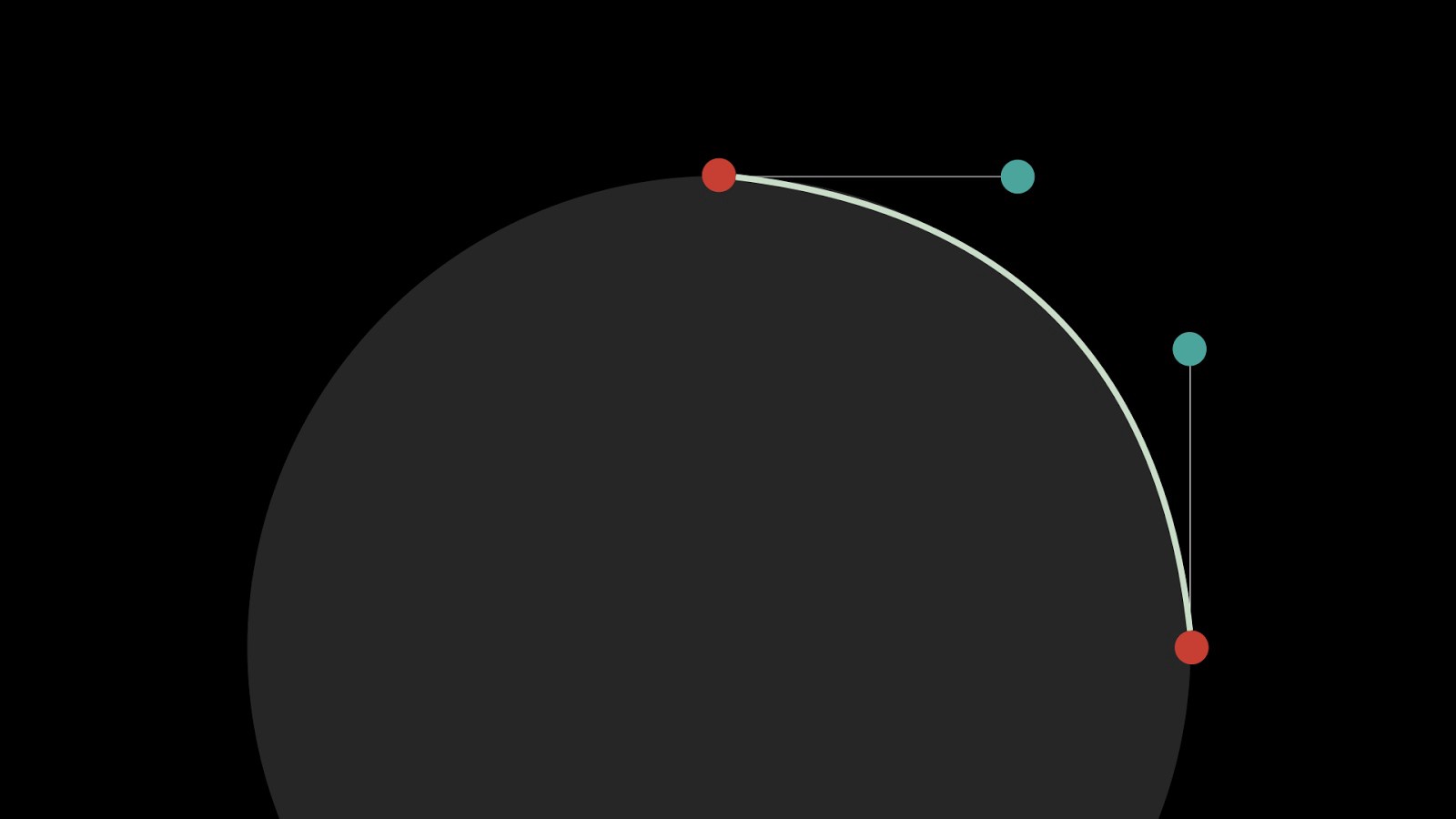
3.有一個學徒的心態 (3. Have an apprentice mindset)
I thought I knew typography, having taken a couple of type classes and working in the design space. But it seems we’ve only been acquaintances. You don’t know typography until you draw it letter by letter. My all-French source material did not have a single K or W because apparently, the French don’t use K’s and W’s! It surprised me that I couldn’t recall what a lowercase k looked like when I drew its arm extended to the cap height.
我以為我知道印刷術,參加過幾次類型訓練并在設計領域工作。 但是似乎我們只是相識。 在不逐字母繪制之前,您不知道字體。 我的全法國原始資料沒有一個K或W,因為顯然,法國人不使用K和W! 令我驚訝的是,當我將其小臂k拉到帽高時,我不記得小寫的k是什么樣子。
When in doubt, learn from others who have succeeded. Anytime I found myself stumped by a letter, I looked to the classics like Baskerville and Bodoni. I went as far as firing up open-source fonts in Robofont to deconstruct and analyze their inner workings. I pictured myself as an apprentice to Firmin Didot. Ten weeks into the program, I was practically besties with typography.
如有疑問,請向其他成功的人學習。 每當我發現自己被一封信困擾時,我都會去看看巴斯克維爾和博多尼這樣的經典作品。 我甚至嘗試在Robofont中啟動開源字體來解構和分析其內部工作原理。 我把自己想象成是Firmin Didot的學徒。 進入課程十周后,我幾乎是排版方面的佼佼者。
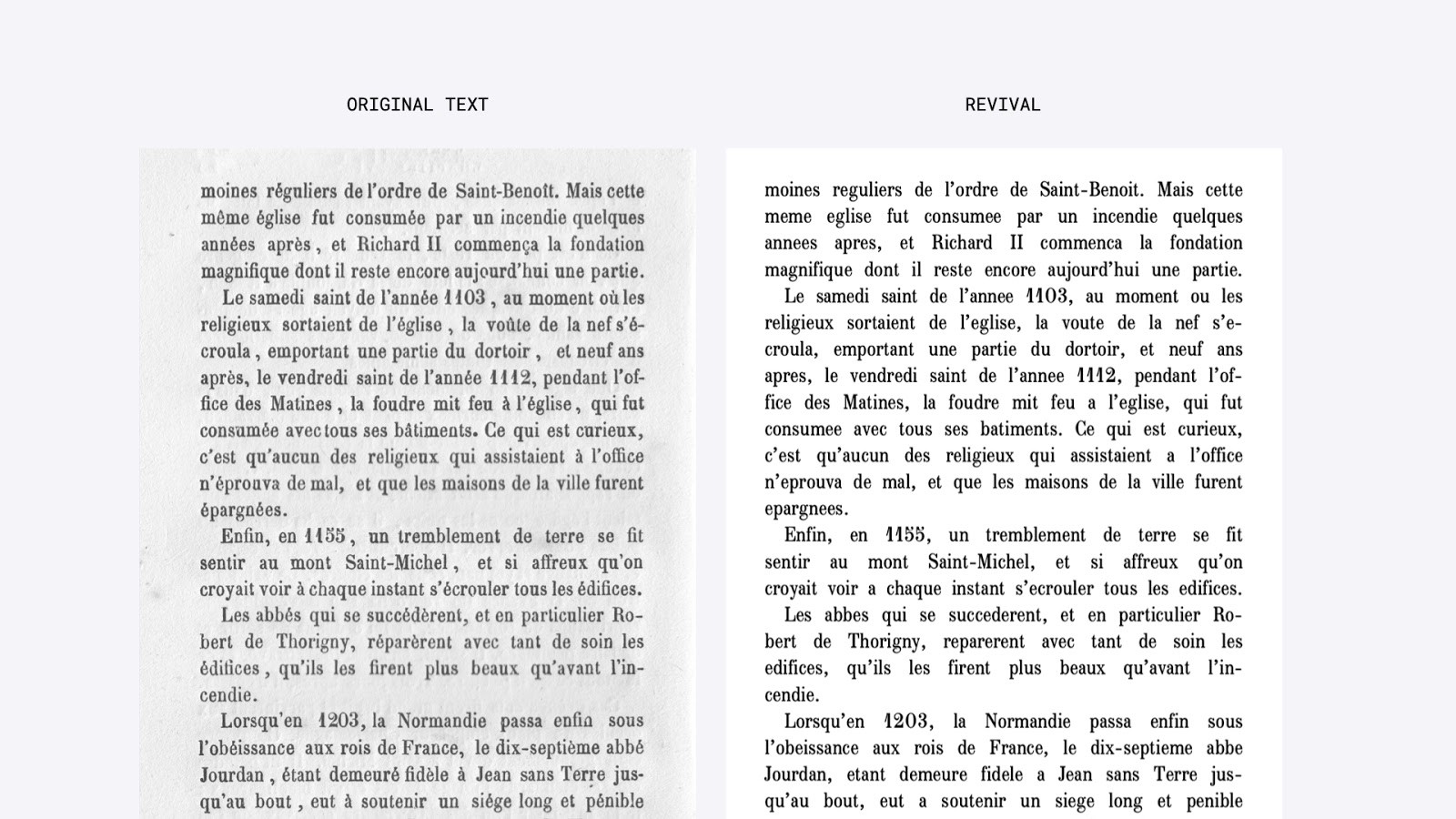
Done is better than perfect. With that mantra in mind, I wrapped up the final character set and at last, gave it a name, Rustique. I found this word on page 34 and felt that it embodied its antiquarian yet dazzlingly modern charm. Sitting back and taking in Rustique, I realized that I’ve gained a whole new appreciation for serifs. Having mainly worked in the tech industry, my world up until this point had been saturated with sans-serifs. I thought they were the best font choice because they were modern, strong, and “clean” — we designers like to say. But creating Rustique has taught me that serifs bring a burst of personality that sans is sometimes well… sans. Serifs can have so many angles, layers, and expressions.
做完比求完美強。 考慮到這一口頭禪,我整理了最后的字符集,最后給它起了個名字Rustique。 我在第34頁上找到了這個詞,并感到它體現了其古物,卻具有令人眼花modern亂的現代魅力。 坐下來接受Rustique,我意識到我對襯線有了全新的欣賞。 在主要從事科技行業工作之前,直到現在,我的世界都充滿了無襯線字體。 我認為它們是最好的字體選擇,因為它們現代,結實且“干凈”(我們的設計師喜歡說)。 但是創建Rustique告訴我,襯線帶給人的突然爆發的感覺有時很好,沒有。 襯線可以具有許多角度,層和表達式。
I’m a different designer after this experience. This intensive program pushed me beyond my comfort zone to the land of ‘aha’s. James and Graham showed me the importance of trusting my aesthetic flair. Put in another way: you can always make a classic recipe unique by adding your spice. Type Tricks taught me to design with my senses, not just my logical brain. Being a beginner reminded me to learn from the masters as a modern-day apprentice.
經歷之后,我是一名不同的設計師。 這項密集的課程將我帶出了我的舒適地帶,來到了“啊哈”的土地。 詹姆斯和格雷厄姆向我展示了相信我的審美才能的重要性。 換句話說,您總是可以通過添加香料來制作經典食譜。 Type Tricks教我用感官進行設計,而不僅僅是我的邏輯大腦。 作為一個初學者,我想向現代大師學習。
In this hyper-connected digital world we live in, there’s already so much design content that when I was a younger designer, I was afraid of making anything that looked remotely like something else. I had this burning desire to be original, but that only made me fear being unoriginal. This, in turn, stopped me from trying new things. But, in order to grow and become a better creator, you must first learn from good examples before you can set your examples.
在我們生活的這個高度連接的數字世界中,已經有太多的設計內容,以至于我還是年輕的設計師時,我就害怕制作出看起來像其他東西的東西。 我渴望成為原始人,但那讓我擔心自己不是原始人。 反過來,這阻止了我嘗試新事物。 但是,為了成長并成為更好的創造者,您必須首先從好的榜樣中學習,然后才能樹立榜樣。
So instead of letting digital connectivity be a barrier, I will use it as an educational resource so I can craft type like Frere-Jones, design like Paula Scher, or photograph like Annie Leibovitz — until I find my house style.
因此,我不會把數字連接作為障礙,而是將其用作教育資源,這樣我就可以制作Frere-Jones之類的字體,Paula Scher之類的設計或Annie Leibovitz之類的照片-直到找到自己的家庭風格為止。
Now to make an original typeface next term…
現在要在下個學期做一個原始字體…
翻譯自: https://uxdesign.cc/a-type-revival-story-lessons-from-type-west-6ddff94c54db
蘋果復興
本文來自互聯網用戶投稿,該文觀點僅代表作者本人,不代表本站立場。本站僅提供信息存儲空間服務,不擁有所有權,不承擔相關法律責任。 如若轉載,請注明出處:http://www.pswp.cn/news/274213.shtml 繁體地址,請注明出處:http://hk.pswp.cn/news/274213.shtml 英文地址,請注明出處:http://en.pswp.cn/news/274213.shtml
如若內容造成侵權/違法違規/事實不符,請聯系多彩編程網進行投訴反饋email:809451989@qq.com,一經查實,立即刪除!

)







)

算法)






